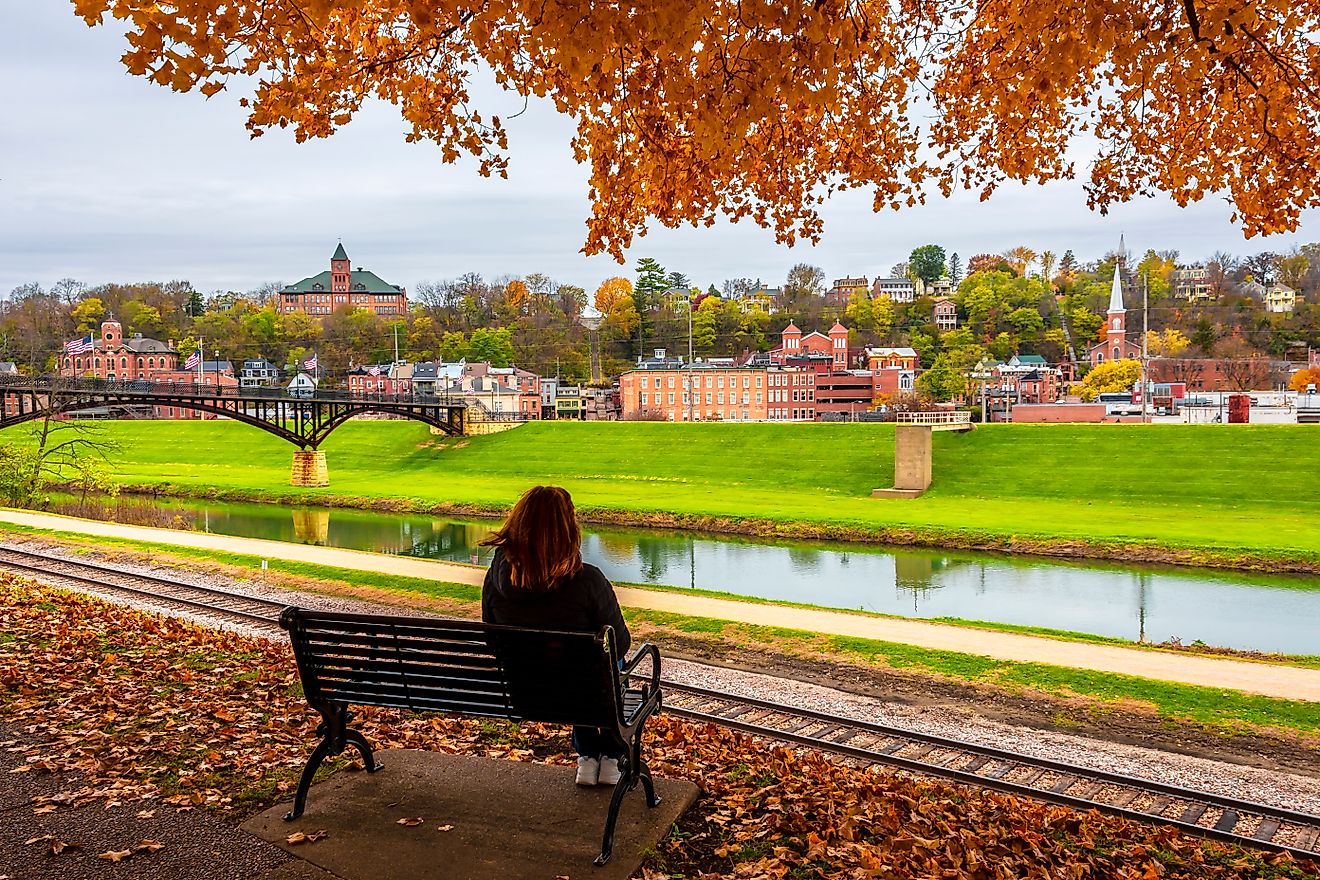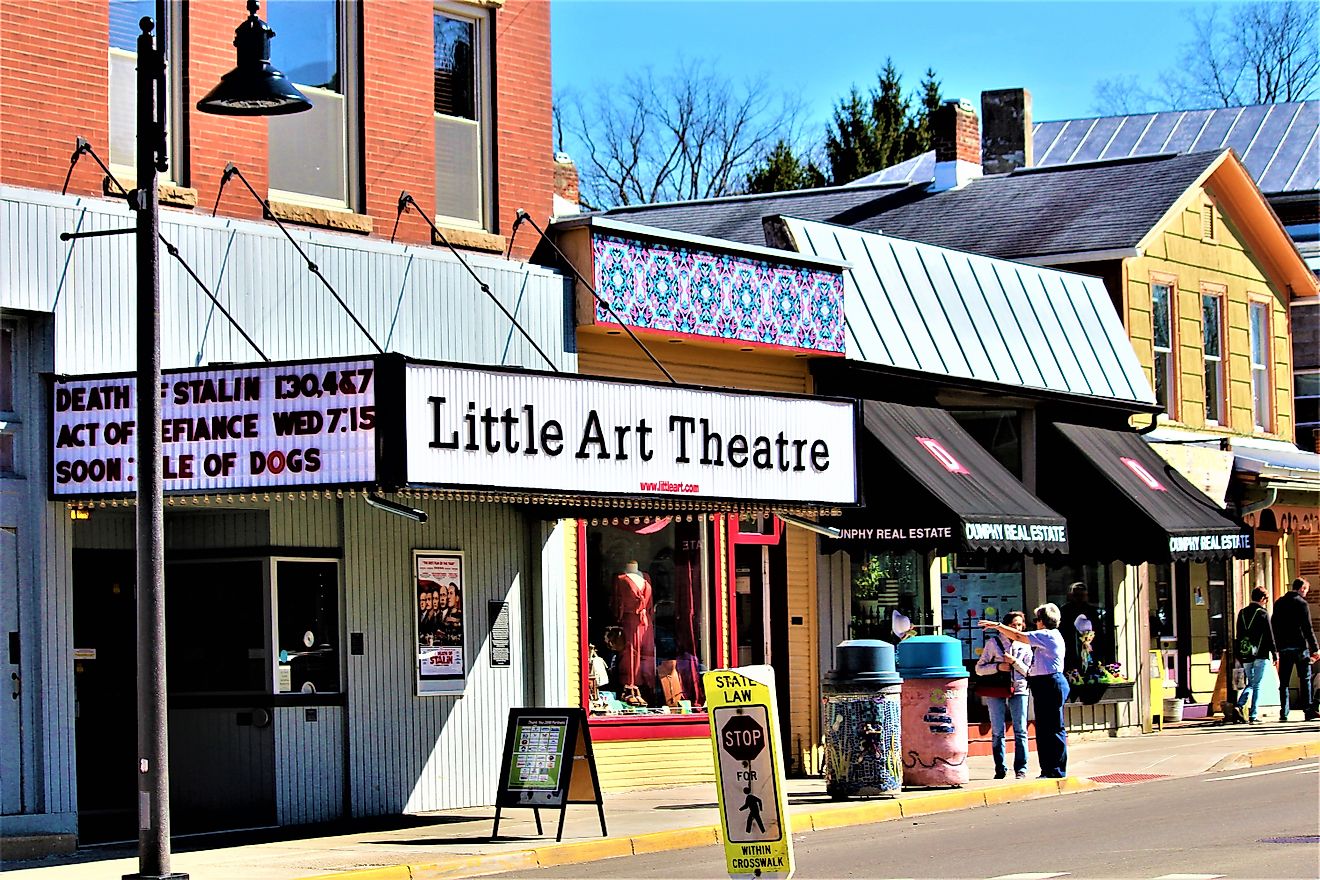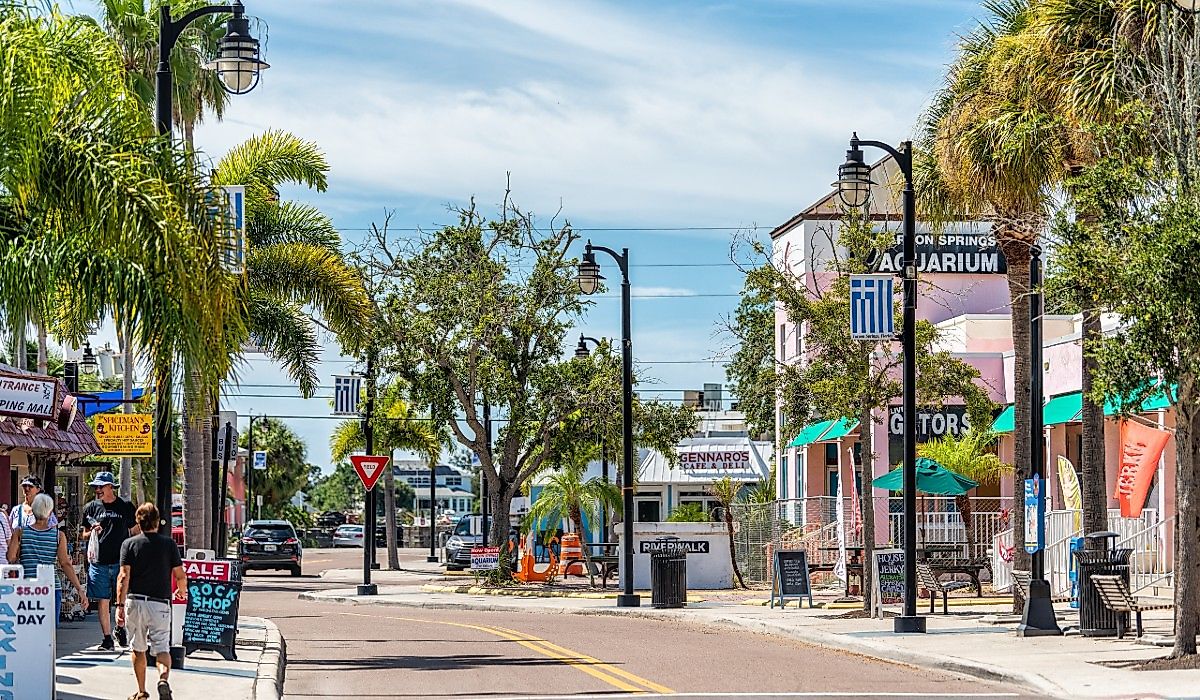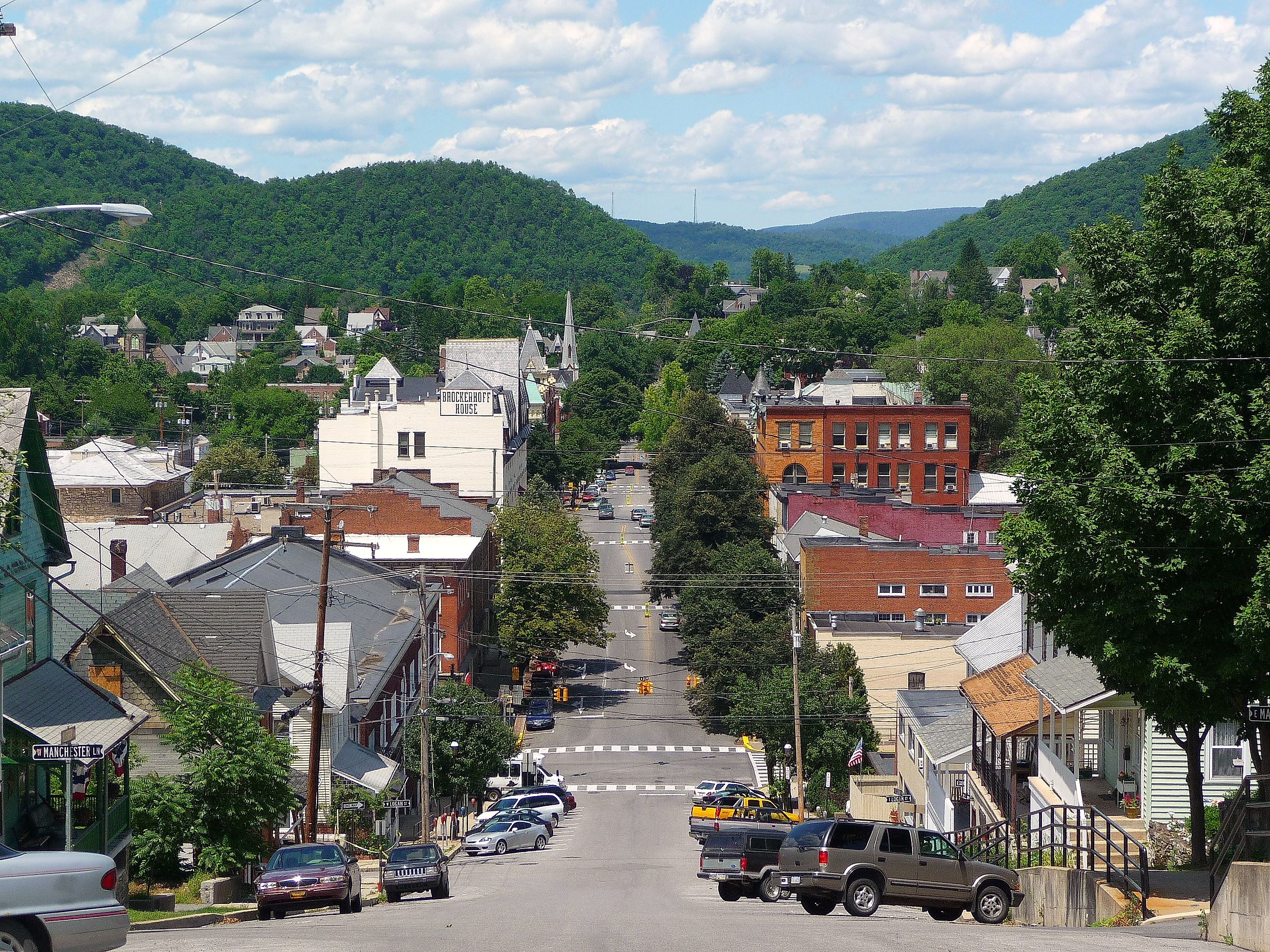
7 Most Overlooked Pennsylvania Towns For 2025
A century of American firsts hides in the ravines and riverbends between Pittsburgh and Scranton. The nation’s inaugural oil pipelines began pulsing beneath Oil City’s sandstone in 1865; eighty miles east, Meadville machinists perfected the zipper that sealed Apollo flight suits. Bellefonte sent more governors to Harrisburg than Philadelphia ever will, while Lock Haven rolled out Piper Cubs that trained half the Army Air Forces.
None of these Pennsylvania boroughs wears its legacy like a costume. They keep working, storing blueprints in basements and history in service. Across seven overlooked towns, industry and memory remain welded to storefront lintels and levee walls, waiting in plain sight on roads most motorists treat as detours. This is Pennsylvania’s backstage, where inventions, proclamations, and quiet stubbornness once altered national trajectories and now linger without footnotes or souvenir shops.
Oil City

Oil City earned its name honestly. In the 1850s, it was the center of the world’s first commercial oil boom, Standard Oil built its first pipelines here, and John D. Rockefeller’s empire took shape in the hills above town. Today, most travelers pass it by on their way to more polished destinations, unaware that the city still holds the architectural bones and industrial remnants of its global heyday. Cast-iron storefronts and faded marquees line the downtown core, many now home to a growing community of artists, drawn by cheap space and old-world charm. Oil City is not a place that performs for visitors. It’s a place where history lives in the open.
Inside the former National Transit Building, once the communications nerve center of Rockefeller’s oil empire, studios buzz with painters, woodworkers, and metal sculptors. Just blocks away, the Oil Region Alliance hosts rotating exhibits inside the Venango Museum of Art, Science & Industry. At Justus Park, the Allegheny River slows and widens, offering a rare quiet stretch for walking paths and open-air concerts. The Yellow Dog Lantern, housed in an 1870s tavern, serves smoked wings and old-oilfield tales.
Lewistown
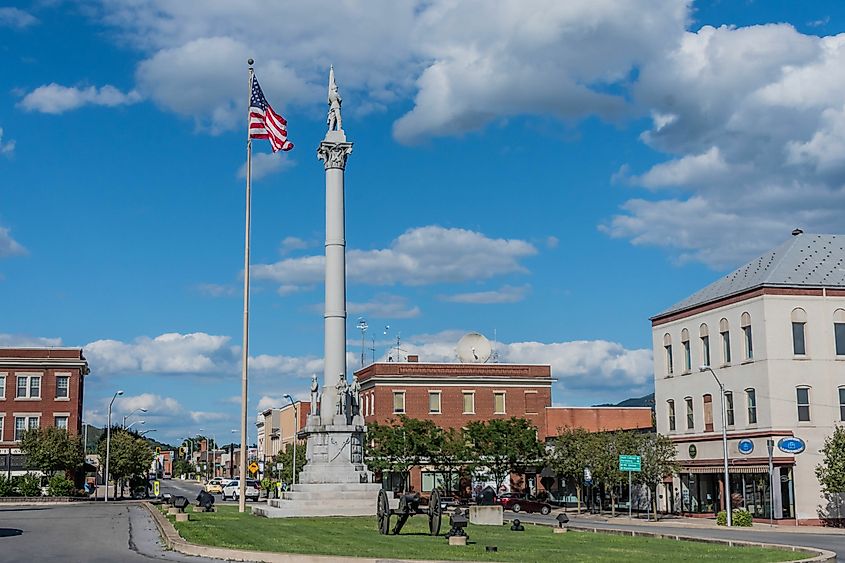
Lewistown was once a key supply and transportation hub along the Juniata River, built around the Pennsylvania Main Line Canal. It’s one of the few towns in central Pennsylvania where 19th-century canal history, Civil War roots, and Depression-era architecture all meet within a few blocks. The Logan Guards, one of the first militia units to answer Lincoln’s call in 1861, formed here, an event still marked with memorials downtown. Despite its history, Lewistown remains under the radar in 2025, bypassed by tourists on their way to State College or Harrisburg.
Start at the McCoy House Museum, birthplace of Civil War general Frank McCoy, where period furnishings and portraits line a modest brick row home. The Embassy Theatre, a Colonial Revival movie palace from 1927, is in active restoration, its original plasterwork and marquee still intact. Walk two blocks to Victory Park, where you’ll find Goose Day murals and a riverside trail near the old canal basin. On Saturdays, The Market House on East Third Street opens its doors for regional produce, baked goods, and small-batch jams. Lewistown doesn’t cater to travelers.
Meadville
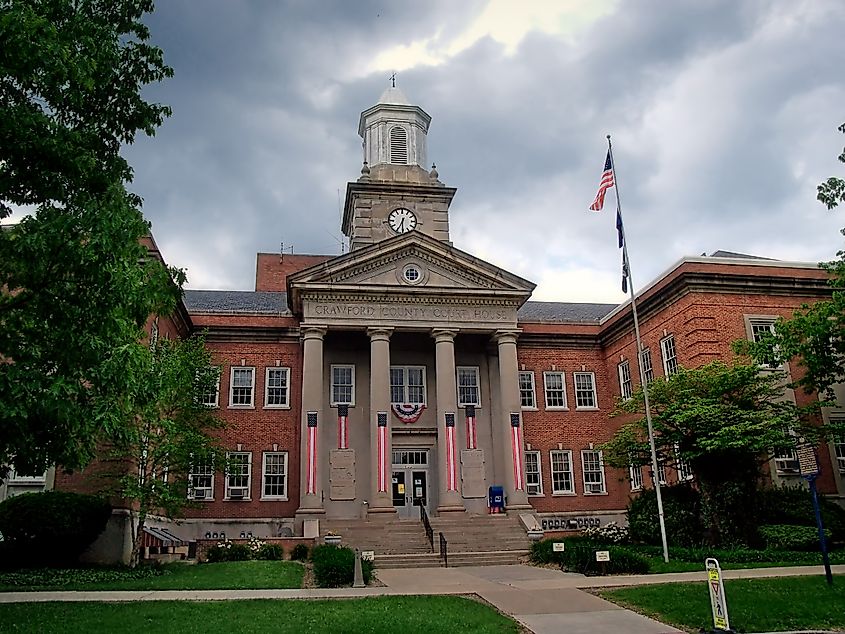
Meadville is where the modern zipper was born. The town's Talon Zipper Company supplied fasteners to NASA, the military, and Hollywood costume houses throughout the 20th century, anchoring Meadville’s reputation as an industrial design and precision tooling hub. Crawford County’s seat and home to Allegheny College, Meadville is defined by a working-class foundation and a visible academic presence. It sits at the crossroads of invention and erosion, where early American industry once surged and then receded, leaving behind walkable neighborhoods and functional public architecture.
At the heart of town is the Meadville Market House, operating since 1870 and still packed with vendors offering pierogies, cured meats, and maple syrup. Voodoo Brewery, founded in a former city firehouse, produces small-batch stouts and sours in an unpolished indoor-outdoor space a block away. Two miles out, the Ernst Trail follows an old rail bed through farms and wetlands, dotted with wildflowers and migratory birds in spring. The Baldwin-Reynolds House Museum, a Greek Revival estate once home to canal investor Supreme Court Justice Henry Baldwin, offers original furnishings and canal-era artwork.
Tamaqua
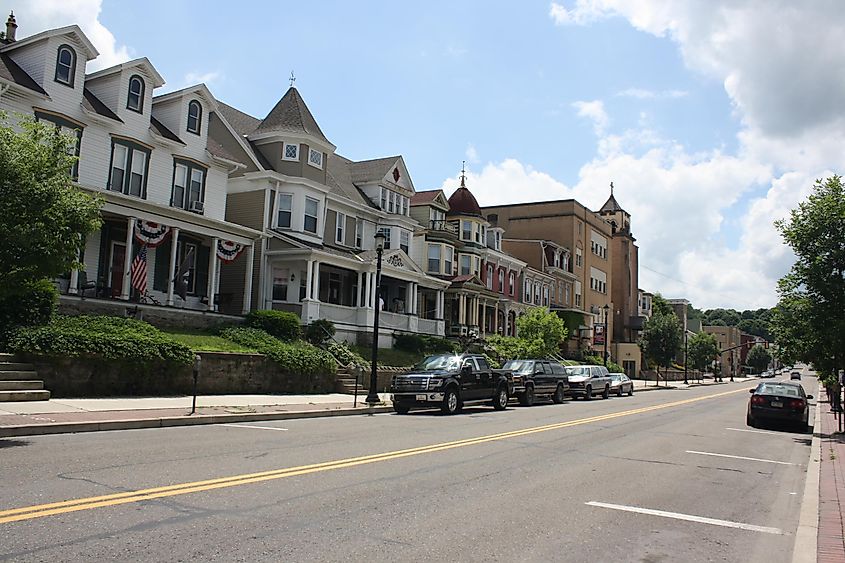
Tamaqua sits on anthracite coal veins that once fueled much of eastern industry. It was one of the first towns in Pennsylvania to implement a formal historic preservation ordinance, a decision that kept much of its 19th-century architecture intact while surrounding boroughs leveled theirs. What stands today is a compact downtown framed by steep hills, brick rowhouses, and coal baron homes, many unrenovated, some reoccupied by a growing arts and restoration community.
The Tamaqua Railroad Station, built in 1874 and restored in 2004, anchors the east end of town with a cafe, visitor center, and occasional excursions. A short walk up Broad Street leads to the Tamaqua Community Arts Center, where gallery shows rotate monthly and local bands rehearse in the annex. For quiet views, Owl Creek Reservoir offers unpaved walking trails and fishing access just outside the borough line. On Saturdays, Hope & Coffee, a café staffed by individuals in recovery, serves espresso and pastries inside a converted Victorian duplex. Tamaqua does not rely on events to draw visitors.
Lock Haven
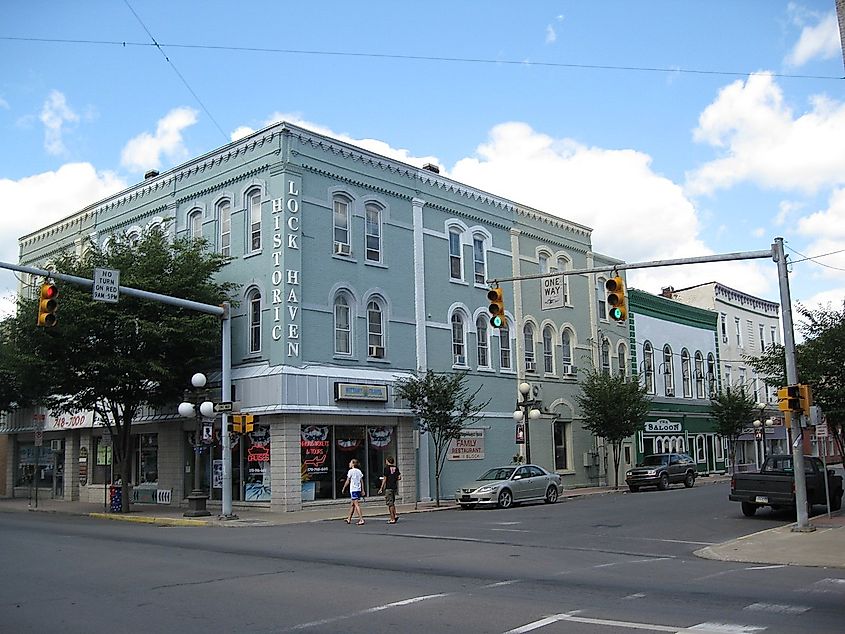
From the 1930s through the early 1980s, the Piper Aircraft Corporation manufactured thousands of light aircraft in a riverside factory just south of Lock Haven, including the iconic Piper Cub, now displayed in aviation museums worldwide. The town’s identity remains tied to that era. Its street grid, parks, and even flood-control walls carry the imprint of a company town scaled to the needs of mid-century aviation. Unlike other manufacturing centers, Lock Haven held on to its local university, public library, and intact Victorian neighborhoods, giving it a foundation that remains visible in 2025.
The Piper Aviation Museum, housed in a hangar on the original factory grounds, includes full-size aircraft, wind-tunnel models, and flight logs from World War II. Downtown, Avenue 209 Coffee House serves espresso, bagels, and local artwork in a former shoe store facing the canal basin. The Heisey House, built in 1831, documents the town’s river-trade era through original furnishings and photographs. For walking and bike access, the Bald Eagle River Walk runs along the levee from Jay Street Bridge to Veterans Park, where small events and food trucks set up during warmer months. Lock Haven remains an aviation town even without its planes.
Bellefonte
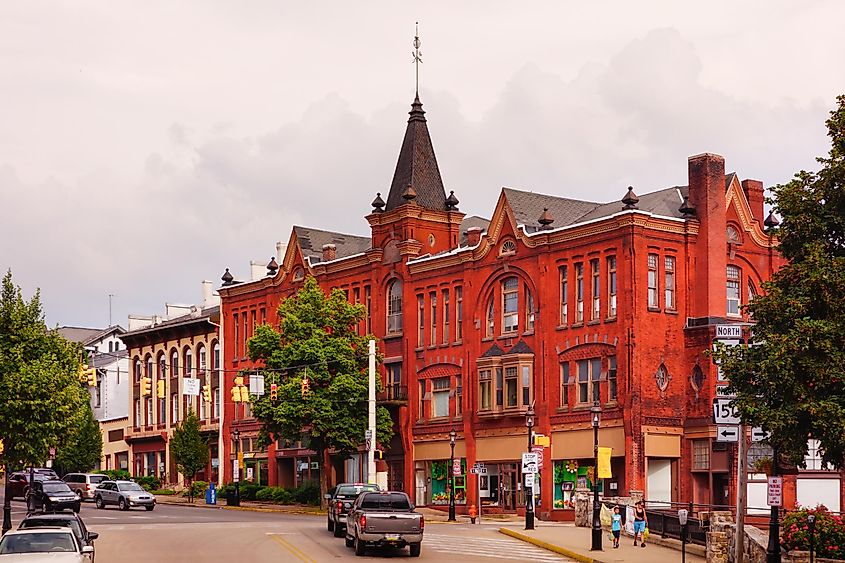
Bellefonte sent more governors to Harrisburg than any other Pennsylvania town. From 1839 to 1919, five state governors and two U.S. senators claimed Bellefonte as home, earning it the title “Home of Governors.” The political legacy is visible in its courthouse square, framed by cast-iron balconies, and in the town’s preserved Victorian architecture, much of it listed on the National Register. Unlike nearby State College, Bellefonte avoided large-scale development. Its civic buildings and residential streets remain in original scale and condition.
At the edge of downtown, Talleyrand Park follows Spring Creek and includes footbridges, benches, and the relocated Railroad Freight House, now housing the Bellefonte Historical Railroad Society. Across High Street, Big Spring Spirits operates out of a repurposed match factory and distills vodka, gin, and rum using water from the town’s natural spring. The Bellefonte Art Museum for Centre County, inside a former home on Linn Street, hosts rotating exhibits focused on regional artists. One block over, Bonfatto’s Italian Market & Corner Café sells hot sausage rolls and jarred family-recipe sauces. Bellefonte isn’t curated for travelers. Its institutions were built for residents, and most still serve that purpose.
St. Marys
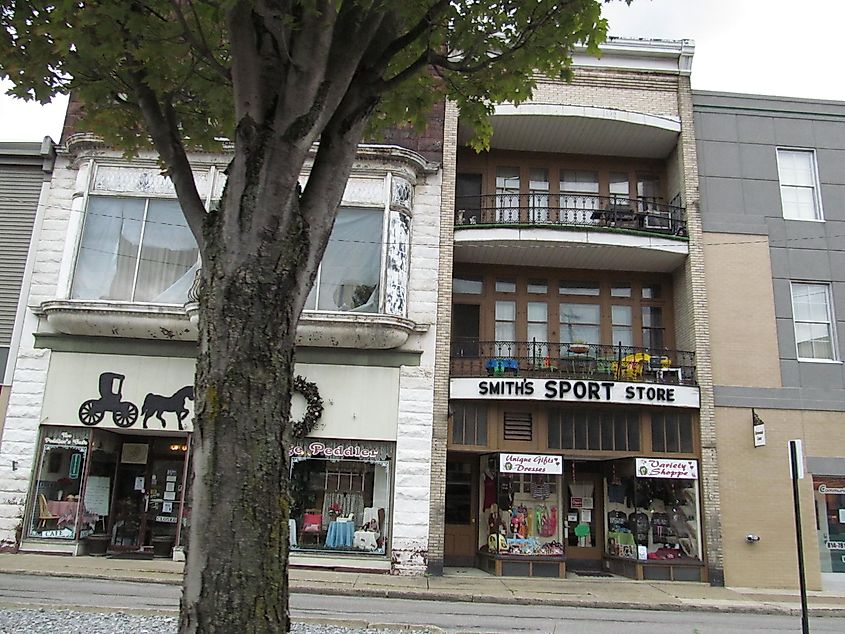
St. Marys was founded in 1842 by Bavarian Roman Catholics seeking isolation for religious freedom. That self-sufficiency still defines the town. It’s one of the few places in Pennsylvania where manufacturing and monastic life coexist. Straub Brewery, family-run since 1872, still uses a gravity-fed brewing process and remains the only U.S. brewery offering an “Eternal Tap,” where visitors can pour their own glass straight from the source. The town’s population is under 13,000, but it’s home to both heavy powder metal industries and Benedictine monks, whose monastery and historic churches overlook downtown.
Inside the original brewhouse, Straub’s visitors center displays early bottling equipment and copper kettles, and guests can access the Eternal Tap with a token. Two miles east, Decker’s Chapel, built in 1856, seats just six people and holds the title as one of America’s smallest worship spaces. North of town, Elk State Forest begins, part of the Elk Scenic Drive, a loop known for bull elk sightings at dusk, especially near the Winslow Hill Viewing Area. For food, Casali’s Italian Grille on Erie Avenue serves family-style chicken parmesan and tiramisu made onsite.
Taken together, these seven towns prove Pennsylvania’s past isn’t locked behind velvet ropes; it still clocks in, pours drafts, fires kilns, stitches zippers, brews spirits, and tolls church bells. Each borough carries a specialty, oil, aviation, coal, governance, metal powder, pierogies, beer, yet shares a common resistance to reinvention by committee. Travelers willing to trade perfect facades for living history will find the Commonwealth’s true engine still idling on these secondary roads.






